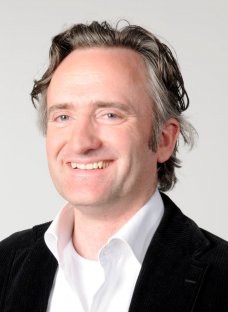 How are the large amounts of genetic data stored and analyzed? Jan Veldink, neurologist and professor in neurogenetics from the University Medical Center Utrecht (UMCU) in the Netherlands, is coordinating Project MinE. Veldink explains about the infrastructure of the largest genome sequencing project for ALS, also known as Lou Gherig’s disease.
How are the large amounts of genetic data stored and analyzed? Jan Veldink, neurologist and professor in neurogenetics from the University Medical Center Utrecht (UMCU) in the Netherlands, is coordinating Project MinE. Veldink explains about the infrastructure of the largest genome sequencing project for ALS, also known as Lou Gherig’s disease.
Storing and analysing sequencing data
Jan Veldink: “To do genetics research you need large cohorts of patients but also matched controls which are only even harder to collect. And we really need all of them whole genome sequenced. This amounts to about ninety gigabytes of data per sample. If you want to collect tens of thousands of subjects you need large storage and compute power. The samples are being sent to a company in the US, Illumina, for whole genome sequencing. The turn-around time is very high with 600 sequenced samples per month. Then, the data comes back over the wire through SURFsara, a Dutch non-profit institute. That’s where the data is stored. This storage allows the Project MinE researchers to perform all the calculations. Each participating university is owner of their own part of the data, the data from their country. The investigators (PIs) in the consortium decide whether or not to share the sequencing data to do large joint analyses with the other researchers.”
15,000 ALS patients
“As of this moment, there are six institutes involved that have sequenced genome data. The partners really want to round this up to maybe ten or fifteen institutes in the coming months. That is necessary because ALS is a not so common disease and the partners really need international collaborators to get to these numbers of 15,000 patients at least if you want to have whole genome sequences.”

Prof. Jan Veldink PhD
Precision medicine for ALS
Jan Veldink prefers precision medicine to personalized medicine. Veldink: “Precision medicine is all about pinpointing the exact cause of an individual’s disease. We know that ALS is a collection of diseases – it is not one disease – so every small group of patients has their own mutation or variants that are responsible for the disease. Nowadays, in molecular biology it is possible to correct or to silence those or to really target those precise aberrations in one patient or in one subgroup of patients. This is going to be of way more benefit than just shooting with a generic drug that will maybe slow the disease a bit. The researchers really hope that this approach will either arrest the disease in the longer term or even better, that remains to be seen.”
Bringing investigators and foundations together
The project collaborates with many foundations over the entire globe. Many patient foundations collect money through donations and all sorts of campaigns. Veldink: “The project tries to bring investigators and foundations together, to help them convince that this is a relevant project so the partners can raise the funds to really complete this project in due course.”
The full interview is available in Primeur Weekly Magazine.